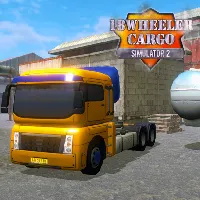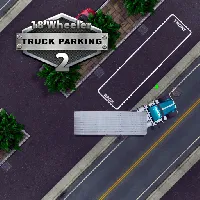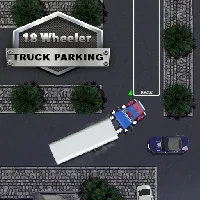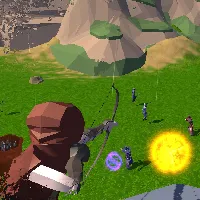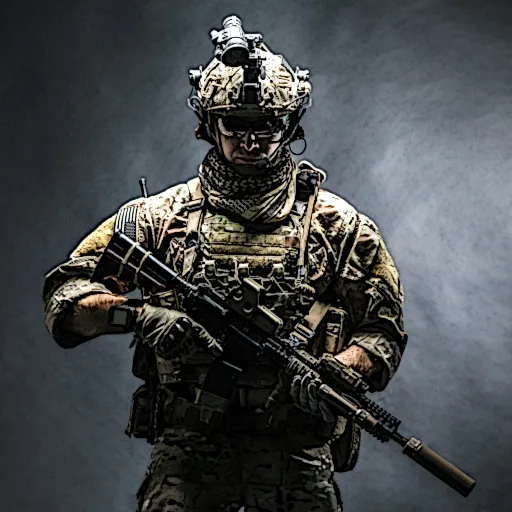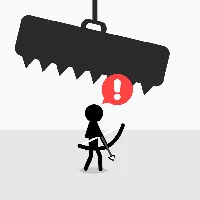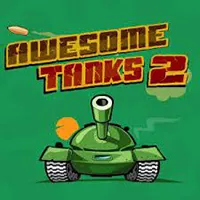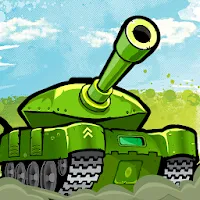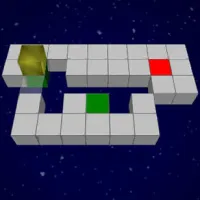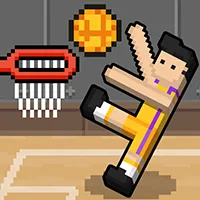STICKMAN WAR
SIMILAR GAMES
Description
Stickman War - GamePluto
About Stickman War - GamePluto
Welcome to the definitive guide for Stickman War, a game that encapsulates strategic thinking, resource management, and relentless tactical combat. We at GamePluto are dedicated to providing comprehensive insights into the games we feature, ensuring our players are equipped with the knowledge to conquer every challenge. Stickman War, in its essence, is a captivating experience where players command legions of stick figures, engaging in epic battles across a variety of environments. The core gameplay revolves around deploying different unit types, each with unique strengths and weaknesses, to outmaneuver and defeat enemy forces. Success hinges on understanding troop formations, anticipating enemy movements, and adapting your strategy on the fly. This game offers a compelling blend of real-time strategy and tower defense elements, making each encounter a test of your tactical prowess.
The Core Mechanics of Stickman War
At its heart, Stickman War is about strategic unit deployment and efficient resource management. Players begin with a limited supply of gold, which is the primary currency used to summon various stickman units. These units range from basic melee fighters, such as the agile Swordman, to ranged attackers like the Arrowman, and powerful siege units capable of decimating enemy defenses. The rate at which you generate gold is crucial; upgrading your gold mines or employing specific units that boost gold production can significantly accelerate your army's growth. The battlefield itself is often a linear path, with players on one side and the enemy on the other, pushing towards each other's base. Your objective is to destroy the enemy's base while simultaneously defending your own. This dynamic creates a constant back-and-forth, demanding vigilance and proactive decision-making.
Understanding Your Arsenal: Unit Types and Their Roles
The diversity of units available in Stickman War is a key factor in its strategic depth. Mastering each unit's role is paramount for victory.
- Swordman: The backbone of any early-game army. These units are relatively cheap, fast, and effective in close combat against other ground units. They are excellent for engaging enemy melee troops and providing a shield for your more vulnerable, ranged units.
- Arrowman: These units excel at dealing damage from a distance. Positioned behind your melee line, Arrowmen can pepper the enemy with arrows, significantly weakening their forces before they reach your defenses. Their effectiveness is reduced in close combat, making proper positioning vital.
- Spearman: Offering a good balance of offense and defense, Spearman are effective against both ground units and can even provide some defense against flying enemies. Their longer reach compared to Swordmen allows them to engage threats at a slightly safer distance.
- Giant: A slow but incredibly powerful unit. Giants are designed to absorb massive amounts of damage and can deal devastating blows to enemy units and structures. They are crucial for breaking through heavily defended enemy lines but come at a high gold cost.
- Mage: These spellcasters unleash area-of-effect spells that can inflict significant damage on groups of enemies. Their ranged magical attacks make them excellent for clearing out swarms of weaker units, but they are fragile and require protection.
- Knight: A more advanced melee unit with superior armor and attack power compared to the basic Swordman. Knights are excellent for leading assaults and breaking through enemy formations.
- Tank: These heavy-duty units are designed to withstand a tremendous amount of punishment. Their high health and armor make them ideal for spearheading attacks and drawing enemy fire, allowing other units to advance safely.
- Bomber: A unique unit that sacrifices itself to deal explosive damage to a wide area. Bombers are best used against tightly packed enemy groups or to damage heavily fortified enemy structures.
Strategic Formations and Battlefield Tactics
The way you arrange your troops before and during a battle can dramatically influence the outcome. A well-thought-out formation allows your units to function synergistically, maximizing their combat effectiveness. Typically, a balanced army will involve a front line of sturdy melee units to absorb enemy attacks, followed by ranged units that can attack unimpeded. Mages and other support units are usually placed further back, protected by the front lines.
When pushing forward, it's often wise to advance with a mixed force. A common tactic is to send a few Giants or Tanks ahead to absorb initial damage, followed by Swordmen and Spearman to engage the enemy up close, while Arrowmen and Mages provide ranged support. Constantly observe the enemy's unit composition and adapt your own deployment. If the enemy is spamming ranged units, you might need to deploy more melee units to close the distance quickly. If they have strong melee units, consider focusing on ranged attackers and spellcasters to thin their numbers before they reach your lines.
Upgrades and Progression: Enhancing Your Stickman Army
Stickman War isn't just about deploying units; it's also about improving them. The game features a robust upgrade system that allows you to enhance the stats of your various stickman types. Investing your hard-earned gold into upgrades provides a significant advantage.
- Unit Stat Upgrades: These typically increase a unit's damage, health, defense, or attack speed. Upgrading your core units, such as Swordmen and Arrowmen, can make them far more effective throughout the game.
- Gold Production Upgrades: Increasing your gold generation rate is crucial for sustaining larger armies and deploying more powerful units. Prioritizing these upgrades can lead to exponential growth in your resources.
- New Unit Unlocks: As you progress through levels or achieve certain milestones, you'll unlock access to new and more powerful unit types. These advanced units often have game-changing abilities and require careful strategic integration into your army.
The decision of which upgrades to prioritize often depends on your current situation and the challenges you face. Sometimes, a burst of offensive power is needed, while other times, enhancing your economic infrastructure is the more prudent long-term strategy.
Mastering Different Game Modes and Challenges
Stickman War often presents a variety of game modes and challenges that test your adaptability. While the core gameplay remains consistent, different modes might introduce unique rules, objectives, or enemy behaviors.
- Campaign Mode: This mode typically involves progressing through a series of levels, each with increasing difficulty and introducing new unit types or strategic scenarios. Mastering the campaign requires a deep understanding of all game mechanics and a willingness to experiment with different strategies.
- Survival Mode: In survival, the objective is to last as long as possible against increasingly waves of enemies. This mode is a true test of endurance and resource management, where every decision counts.
- Daily Challenges: These often offer unique modifiers or specific unit restrictions, encouraging players to think outside their usual strategic comfort zone. Completing daily challenges can yield valuable rewards.
Each mode demands a slightly different approach. Campaign levels often have specific choke points or enemy compositions that need to be countered with particular unit combinations. Survival modes require a sustained economic engine and the ability to effectively manage your units to repel endless assaults.
Tips and Tricks for Dominating the Battlefield
To truly excel in Stickman War, consider these advanced tips:
- Scouting and Adaptation: Always observe the enemy's unit composition. The visual cues on the battlefield can tell you a lot about what they are planning. Adjust your unit production and deployment accordingly.
- Economic Advantage: Never underestimate the power of a strong economy. Prioritize gold-generating upgrades early on. A richer player can deploy more units faster, creating an overwhelming advantage.
- Unit Combinations: Experiment with powerful unit synergies. For example, using Mages to weaken groups of enemies before they are hit by a Giant's slow, powerful attack can be devastating.
- Timing is Key: Know when to attack and when to defend. Sometimes, a temporary retreat to build up your forces and economy is more beneficial than a premature assault that leads to heavy losses.
- Utilize Special Abilities: If certain units possess special active abilities (like a Mage's powerful spell), make sure to use them strategically at the right moment for maximum impact.
- Base Defense: Don't neglect your own base's defenses. Having a few stationary defensive units or upgrading your base's resilience can be crucial in repelling strong enemy pushes.
Conclusion: Your Path to Stickman War Mastery
Stickman War offers a deceptively simple premise that unfolds into a deeply strategic and engaging experience. By understanding the core mechanics, mastering the diverse unit types, employing sound tactical formations, and investing wisely in upgrades, players can achieve unparalleled success. We encourage you to dive into the action, experiment with different strategies, and discover the thrill of leading your stickman army to victory. At GamePluto, we are committed to supporting your journey through the most engaging games.
Play Stickman War for free on GamePluto. Enjoy thousands of the best games with no ads, easy access from anywhere, and fun gameplay using your keyboard or just clicking. Have a blast! 🎮
Common Controls:
Keyboard Controls:
- Arrow Keys: Movement (Up, Down, Left, Right)
- W, A, S, D: Alternative movement keys
- Spacebar: Jump or action key
- Enter: Confirm or interact
- Shift: Run or sprint
- Ctrl: Crouch or special action
- E, Q, F: Interact, pick up items, or perform specific game actions
- 1-9: Select weapons or items
- Tab: Open inventory or menu
- Esc: Pause game or open game settings
Mouse Controls:
- Left Click: Primary action (e.g., shoot, select)
- Right Click: Secondary action (e.g., aim, alternate functions)
- Mouse Movement: Aiming or camera control
- Scroll Wheel: Zoom in/out or cycle through items/weapons
Gamepad/Controller (if supported):
- Analog Sticks: Movement and aiming
- A/B/X/Y or Cross/Circle/Square/Triangle: Action buttons for various functions
- D-Pad: Menu navigation or movement
- Triggers (L1/R1, L2/R2): Shooting, aiming, or special actions
- Start/Select: Open menu or pause game
Touch Controls (for mobile-friendly games):
- Tap: Select or interact
- Swipe: Move or aim
- Pinch/Spread: Zoom in or out
- Long Press: Secondary action

